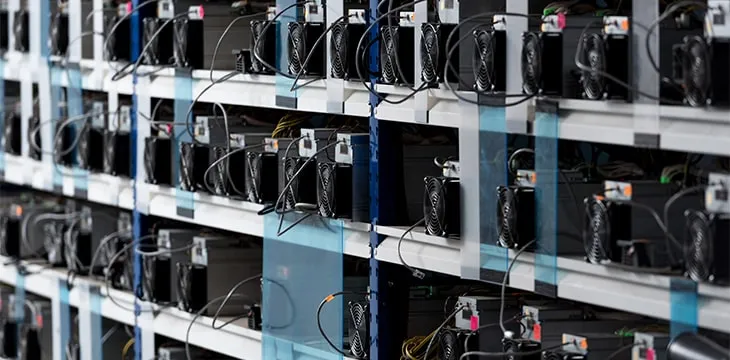|
Getting your Trinity Audio player ready...
|
Recently there was an article by ZeMing Gao, a respected expert on Bitcoin mining models that talked about the dynamics BTC vs BSV in the economic regime after all block subsidies disappear, and all 21 million bitcoins have been distributed.
I thought that the article had some very good and very commonly misunderstood points, though was a bit wordy, so I thought it would be good if we could break down the finer points that the article covers without going too much into the details because I think it is key to understand the ‘long run’ prospects for miner profitability for the two competing chains, given that miner profitability is the foundation for the security model in proof-of-work blockchains.
The article first came out on ZeMing Gao’s site in August 2021 and was republished in February on CoinGeek, titled “The economics of Bitcoin mining.” The fundamental point of the article was that in the long run the economic models put forth by BSV is going to win out over the economic model employed by the more popular BTC version of Bitcoin and had pretty sound economic facts supporting the claim. In order to understand the article’s standpoint and conclusion we first have to explore the two different economic models employed in the different versions of Bitcoin and the differences between them.
The fundamental basis behind the revenue model in BTC is centered on its limitation of its block size which has been capped at 1 megabyte maximum since 2010. This results in the fact that the revenue generated from mining BTC comes predominantly from the mining rewards or the mining subsidy. Currently the average block in BTC earns around US$280,000. Less than 1% of that is in transaction (txn) fees. This is a result of the simple reality that you cannot fit enough txns in 1MB to earn much more, not without the per txn fee rate going exponential driving an uncontrolled spike that results in txn confirmation slowdowns for all users unwilling to pay exorbitant fee premiums.
In contrast, the economic model employed by BSV leverages the fact that it has no upper limit on the size of blocks and therefore miners are free to earn as much revenue as demand allows from the sheer volume of transactions generated from all users. Another positive effect of the unbounded block size is that the more people use the system, the per txn fee rate will always likely stay consistently low, further encouraging more real-world usage.
As BSV blocks get on average larger and larger, miners stand to earn more and more from BSV mining from transaction fees as a percentage of the total revenue in a block. As it currently stands the fee portion of a BSV block reward is already between 10-50%.
If you looked at those links, the immediate conclusion that many jump to is “BTC price is 40k USD, and BSV price is just 80 USD, how can any miner on BSV be profitable?” Simple. It’s just math. While the price is about 500x different, so is the hash rate, and thus the difficulty. Current BTC hash rate is about 200 exahashes/s, while BSV is only about 0.4 exahashes/s. Therefore, the same amount of hash power will tend to make a much larger portion of the network (and thus share of rewards) on BSV than on BTC. Which means, if the price ratio between BTC and BSV were to change from 500x to say, 400x, then we would expect the hash power ratio on BSV to rise 20% due to the increased profitability available on BSV, which would attract some BTC miners to switch. Therefore, it actually doesn’t matter what the actual prices the coins are, and just the ratio between the prices and hash rates of the respective networks that really matter.
One of the biggest things driving the revenue model of miners is the division between revenue generated from fees versus revenue generated from the block subsidy. As we know the block subsidies are set to half every four years and they will eventually become economically insignificant, probably around the year 2040 or earlier due to the fact that we get closer and closer to having all of the 21 million bitcoins being fully distributed.
Unless the price of bitcoin doubles every four years, and this is a big IF, the reduction in the block reward subsidies is going to cut into miner profitability. Once a miner ceases to be profitable mining on one chain, they’ll obviously have an economic incentive to switch to any alternative chain where they stand to earn more profits in fiat terms. That so much is obvious. What’s not obvious to very many people is that the assumption that the price of BTC will continue to double every four years is not a given.
In fact, I think a lot of people suffer an acute case of self-fulfilling prophesy mixed with wishful thinking. They believe that because the economic model of BTC cannot work without the price doubling, therefore the price must double in order for the system to continue to persist. But this I believe is a misconception. This is a false premise. The fact that it has done so in the last 12 years is due to many other reasons, most of these reasons is because the hype cycle that Bitcoin has generated had been continually recruiting new people and new potential investors until now. But I believe this notion of Bitcoin being some sort of digital gold or store of value that’s supra legal and not subject laws has long been past.
Thus, if we assume that the price of BTC is not guaranteed to perpetually double every four years then the amount of profit miners can generate from mining BTC will continue to degrade. There is nothing that BTC devs can do to continue to perpetually support the high revenue and profit/hash ratios which miners currently enjoy as the subsidy decreases. It is therefore expected then that as profitability degrades more and more hash power will switch off or move to other chains.
On the other hand, with the BSV economic model which is based on perpetually increasing transactional volume coupled with the fact that there is no limitation on the block size, BSV only stands to earn more for miners the more people that USE the platform. Once the ratio of BSV profit/hash surpasses that of BTC by significant amount, (and by significant according to the article the author claims anything about 15 to 20%) hash power is going to start to switch over to BSV.
This problem for BTC only exacerbates as more people use and generate transactions on BSV. As there’s no such thing as a “fake” transaction as long as it’s a paying transaction, as long as there are transactions increase there will be more and more revenue on the table for miners to claim if they mine BSV.
Seen from a simple long term economic basis, the survival mode of BTC is completely dependent on the price continually rising, while BSV’s is dependent on transaction volume rising. For both of these bitcoin chains, if either of their dependencies stops rising, then miners will just turn off their machines and go out of business. We know that there is no such a thing as a perpetual motion machine, so to expect that anything will rise indefinitely is a little bit far-fetched. But between the market price of a limited supply virtual asset, or planetary transactional volumes, I’d bet on the latter being the one that has a longer growth curve.
/Jerry Chan

 08-08-2025
08-08-2025 




